Manufacturing
Manufacturing Motor Manufacturing Efficiency Manufacturing Environmental Manufacturing Electric Manufacturing Impact Manufacturing Equipment Manufacturing Consumption Manufacturing Source Manufacturing Magnet Manufacturing Space Manufacturing Smart Manufacturing Life Manufacturing Disposal Manufacturing Intelligence Manufacturing Material Manufacturing Renewable Manufacturing Processing Manufacturing Power Manufacturing Sustain Manufacturing Sector Manufacturing Energy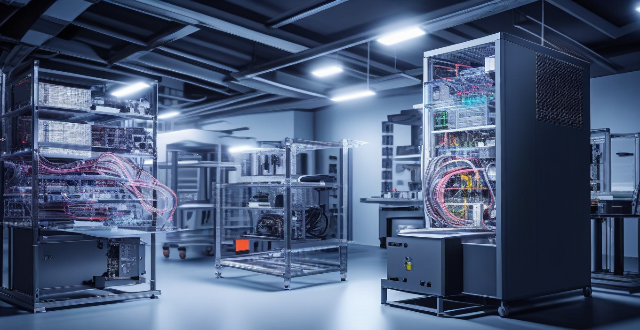
How has the adoption of Industry 4.0 technologies influenced energy efficiency in manufacturing ?
Industry 4.0 technologies significantly impact energy efficiency in manufacturing by enabling precision and optimization, data-driven decision making, resource management, promoting sustainability, and enhancing employee engagement. These advancements contribute to a future where smart manufacturing and sustainability are intertwined.

What is the impact of smart manufacturing on industrial energy consumption ?
Smart manufacturing, or Industry 4.0, is transforming industrial operations through AI, IoT, and robotics to boost efficiency and sustainability. One major benefit is its impact on reducing energy consumption in industries. This article discusses how smart manufacturing can aid in decreasing energy usage: 1. **Optimization of Production Processes**: Real-time data analytics and predictive maintenance techniques lead to less energy waste and higher efficiency. Sensors monitor equipment performance to reduce downtime and energy consumption during repairs. 2. **Automation and Robotics**: Replacing manual labor with automated machines and robots results in higher precision and consistency while minimizing energy usage. Smart technologies also enable better resource allocation for reduced energy consumption. 3. **Energy Management Systems (EMS)**: EMS are crucial for monitoring and controlling energy consumption. They provide insights into energy usage patterns, allowing companies to identify areas where energy savings can be achieved. Implementing energy-saving measures based on EMS data can significantly cut energy consumption and costs. 4. **Renewable Energy Sources**: Smart manufacturing promotes the use of renewable energy sources like solar and wind power to reduce dependence on non-renewable sources like fossil fuels. This contributes to environmental sustainability by lowering greenhouse gas emissions. Integrating smart grids into industrial facilities further optimizes energy distribution and enhances efficiency. Overall, smart manufacturing significantly impacts industrial energy consumption by optimizing production processes, incorporating automation and robotics, implementing energy management systems, and promoting renewable energy sources. These advancements not only reduce energy waste but also contribute to environmental sustainability by lowering greenhouse gas emissions.
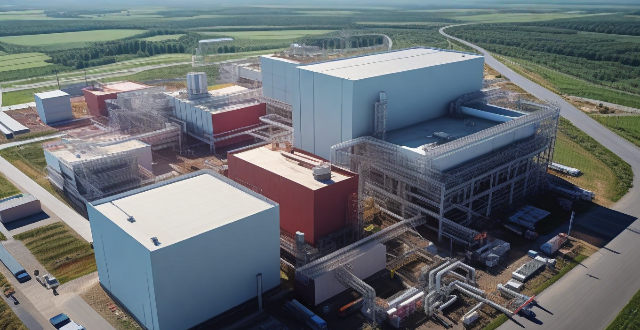
How has automation changed the manufacturing industry ?
Automation has significantly impacted the manufacturing industry by increasing productivity, reducing costs, enhancing safety, and providing flexibility. It has also led to improved data collection and analysis but has shifted labor force needs and raised environmental considerations.

How do safety regulations affect the manufacturing industry ?
Safety regulations are critical in manufacturing for worker safety, environmental protection, and product quality assurance but can increase costs and administrative burden while potentially slowing innovation.

What is the role of artificial intelligence in modern rocket technology ?
The article discusses the pivotal role of Artificial Intelligence (AI) in revolutionizing various aspects of modern rocket technology. It explores how AI is transforming design and manufacturing processes, including computational fluid dynamics simulations, machine learning-driven material science, and automated manufacturing. The text also delves into AI's contributions to launch and orbital insertion, such as predictive maintenance, trajectory optimization, and real-time decision making. Furthermore, it highlights AI applications in on-orbit operations like autonomous navigation, swarm intelligence, and fault detection and recovery. The article concludes by discussing future implications of AI in deep space exploration, reusable rocketry, and collaborative robotics, emphasizing its potential to make space missions safer, more efficient, and cost-effective.
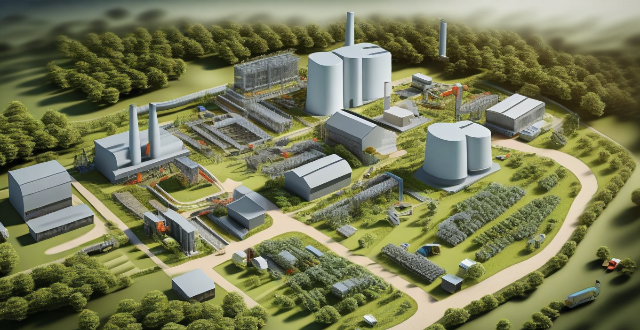
Are there any environmental concerns associated with the production and disposal of DC brushed motors ?
The article discusses the environmental concerns associated with DC brushed motors, including high energy consumption, material extraction and processing, manufacturing processes, and end-of-life disposal. It suggests potential solutions such as improved efficiency, sustainable material sourcing and processing, eco-friendly manufacturing practices, and responsible end-of-life management to mitigate their impact on the environment.
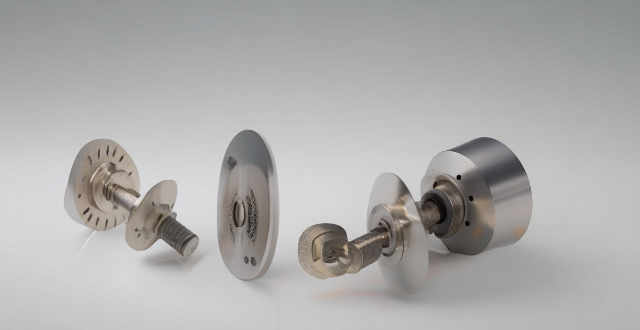
In which industries are permanent magnet motors most commonly used ?
Permanent magnet motors are utilized across a wide range of industries due to their efficiency and reliability. Key sectors include the automotive industry, where they power electric and hybrid vehicles and are used in automated manufacturing. In aerospace and defense, PM motors are crucial for aircraft systems and military applications. Appliance manufacturing benefits from PM motors in household and commercial equipment. The medical sector employs them in imaging equipment and surgical tools. Manufacturing and process control use PM motors in CNC machinery and pumps/valves. Renewable energy sectors such as wind turbines and solar tracking systems also rely on these motors. Consumer electronics, including audio and visual equipment as well as toys and hobbyist products, make use of permanent magnet motors for various functions.

What are the environmental impacts of electric cars ?
Electric cars, also known as EVs (Electric Vehicles), have become increasingly popular in recent years due to their potential to reduce greenhouse gas emissions and improve air quality. However, like any other technology, electric cars also have some environmental impacts that need to be considered. In this article, we will discuss the various environmental impacts of electric cars. One of the most significant environmental benefits of electric cars is their ability to reduce greenhouse gas emissions. Compared to traditional gasoline-powered vehicles, electric cars produce zero tailpipe emissions. This means that they do not release harmful pollutants such as carbon dioxide, nitrogen oxides, and particulate matter into the atmosphere. As a result, electric cars can help reduce air pollution and improve public health. The environmental impact of electric cars also depends on the source of energy used for charging them. If the electricity used to charge an electric car comes from renewable sources such as wind or solar power, then the overall environmental impact is positive. However, if the electricity comes from coal-fired power plants or other non-renewable sources, then the environmental benefits are reduced. It is essential to ensure that the electricity used for charging electric cars comes from clean and sustainable sources. The production of lithium-ion batteries used in electric cars has some environmental impacts. The mining and processing of raw materials required for battery production can lead to water pollution, soil contamination, and habitat destruction. Additionally, the disposal of spent batteries can pose challenges as they contain toxic chemicals that can harm the environment if not disposed of properly. Recycling programs and research into alternative battery technologies can help mitigate these impacts. The manufacturing process of electric cars also has some environmental impacts. The production of electric car components requires energy and resources, which can lead to greenhouse gas emissions and other forms of pollution. However, compared to traditional gasoline-powered vehicles, electric cars generally have a lower environmental impact during the manufacturing process due to their simpler design and fewer moving parts. To fully understand the environmental impacts of electric cars, it is essential to consider their entire lifecycle, including raw material extraction, manufacturing, use, and disposal. A comprehensive lifecycle analysis can help identify areas where improvements can be made to reduce the overall environmental impact of electric cars. This may include using more sustainable materials, improving energy efficiency during manufacturing, and developing better recycling programs for spent batteries. In conclusion, while electric cars offer significant environmental benefits over traditional gasoline-powered vehicles, they also have some environmental impacts that need to be considered. By addressing these issues through sustainable practices and continued research, we can maximize the positive environmental impacts of electric cars and work towards a cleaner, greener future.

What factors affect the performance of a lithium battery ?
The performance of a lithium battery can be affected by temperature, charging rate, discharging rate, depth of discharge, age, and manufacturing quality. High temperatures and fast charging can damage the battery and reduce its lifespan, while low temperatures and slow charging can prolong the battery's lifespan but may not provide enough power for high-demand devices. High discharging rates can cause the battery to heat up and decrease in performance, while low discharging rates can prolong the battery's lifespan but may not provide enough power for high-demand devices. High DoD can lead to increased stress on the battery and a shorter lifespan, while low DoD can help prolong the battery's lifespan but may not be practical for devices that require a lot of power. Older batteries will have decreased capacity and performance, while newer batteries will have better performance and capacity. High-quality manufacturing processes can result in better performing batteries with longer lifespans, while low-quality manufacturing processes can result in poor performing batteries with shorter lifespans.

What are the challenges faced by the wind energy industry ?
The wind energy industry faces several challenges including intermittency, site selection, manufacturing issues, maintenance and reliability concerns, and environmental impact. Addressing these challenges requires innovation, policy support, and collaboration between stakeholders and communities.

What are the costs associated with implementing satellite communication systems ?
The text discusses the costs involved in implementing satellite communication systems, including design and development, manufacturing and production, launch and deployment, operational, and decommissioning expenses. It emphasizes the need to consider these costs throughout the system's lifecycle to determine its feasibility and profitability.
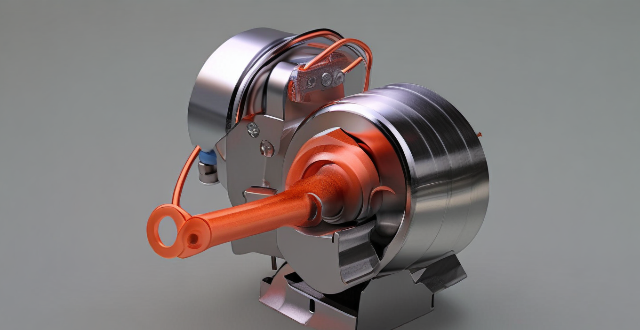
What is the typical cost difference between a permanent magnet motor and an equivalent size induction motor ?
Permanent magnet motors (PMMs) and induction motors (IMs) are two common types of electric motors used in various applications. The cost difference between them is often a significant factor in deciding which one to use. PMMs are known for their high efficiency, compact size, and low noise levels, while IMs are simpler and more robust. The cost difference depends on factors such as size, power rating, materials used, and manufacturing processes. Generally, PMMs are more expensive than IMs of equivalent size due to material costs, manufacturing processes, efficiency and performance requirements, and market demand and availability. When choosing between these two types of motors, it is essential to consider both the technical requirements and budget constraints of your specific application.

Is it possible to create a truly sustainable "green" battery ?
Creating a truly sustainable "green" battery is an ambitious goal that aligns with the global effort to reduce environmental impact and transition towards renewable energy sources. However, achieving this objective presents significant challenges and requires innovations in materials, design, and production processes. Key considerations for sustainable batteries include eco-friendly raw materials sourcing, recyclability, energy-efficient manufacturing processes, waste management, high energy density, longevity, comprehensive recycling programs, and secondary uses. Challenges and trade-offs involve technological limitations such as research and development needs and potential performance trade-offs, economic implications like increased production costs and market adoption challenges, as well as legislative and regulatory frameworks needed to promote green batteries. In conclusion, creating a truly sustainable "green" battery is feasible but complex, involving multifaceted approaches across material selection, manufacturing processes, product performance, and end-of-life management.

What are some examples of industries that have implemented automation successfully ?
Automation has revolutionized industries by boosting efficiency, cutting costs, and elevating productivity. Key sectors that have effectively integrated automation include: 1. **Manufacturing**: Robots enhance production speed, quality control, and cut labor expenses. Examples include car manufacturing and electronics assembly. 2. **Retail**: Automated systems improve inventory management and customer experience through self-checkout kiosks and online shopping. Amazon warehouses and large retail chains use these technologies. 3. **Healthcare**: Automation in healthcare aids in diagnostics and streamlines patient records management. Radiology and automated pharmacy dispensing are notable examples. 4. **Banking and Finance**: Automated systems expedite transaction processing and risk assessment, with algorithmic trading and chatbots being prominent applications. 5. **Agriculture**: Precision farming and harvesting machines increase efficiency in crop monitoring and harvesting. Drones for crop monitoring and automated irrigation systems are utilized.

How has 3D printing technology changed the way we design and produce sports equipment ?
3D printing technology has revolutionized the sports equipment industry by enabling customization, rapid prototyping, complex designs, and on-demand production. This innovation benefits athletes with personalized gear, faster design cycles, optimized performance, and sustainable practices.

What factors influence vaccine distribution ?
Vaccine distribution is a complex process influenced by various factors, including production, logistics, and demand. Key factors include the availability of raw materials, manufacturing capacity, quality control measures, transportation infrastructure, cold chain maintenance, staff training, population size, geographic location, and public perception and trust. Addressing these factors is crucial for ensuring effective and efficient vaccine distribution to those who need it most.

How long does it typically take to develop a new vaccine ?
Developing a new vaccine is a complex and time-consuming process that involves multiple stages of research, testing, and approval. It typically takes several years to develop a new vaccine, with the duration varying depending on factors such as the type of pathogen being targeted, the availability of existing research, and regulatory requirements. The process includes research and development, preclinical testing, clinical trials in humans (Phases I, II, and III), regulatory approval, and manufacturing and distribution.
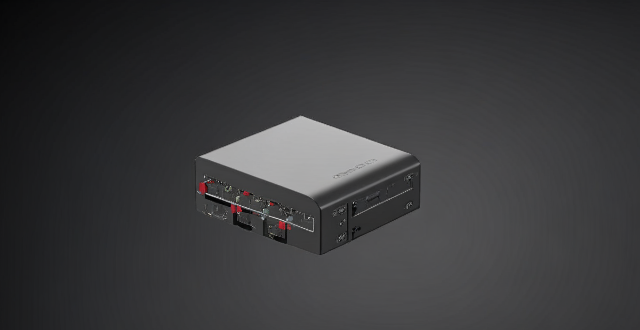
What is single motor drive ?
Single motor drive is a type of electric drive system that uses one motor to power a machine or device, offering efficiency, precision, simplicity, flexibility, and reliability. It has numerous applications across various industries, such as manufacturing, transportation, robotics, HVAC, and agriculture.

How has the Clean Energy Revolution affected the job market ?
The clean energy revolution has created new job opportunities across various sectors, including solar, wind, geothermal, hydropower, and bioenergy. The industry requires specialized skills in engineering, manufacturing, maintenance, sales, marketing, policy analysis, and advocacy. The clean energy revolution has also transformed existing industries by integrating renewable energy sources into their operations. The shift towards renewable energy sources is expected to continue, requiring individuals to acquire the necessary skills and knowledge to thrive in this rapidly evolving landscape.

What role do pharmaceutical companies play in promoting vaccine equity ?
Role of Pharmaceutical Companies in Promoting Vaccine Equity: - **Introduction**: Discusses the importance of vaccines and the challenge of vaccine equity. - **Development and Production of Vaccines**: Covers research, development, manufacturing, and quality control measures. - **Availability and Affordability of Vaccines**: Includes pricing strategies and partnerships with governments and NGOs. - **Improving Access to Vaccines**: Discusses global health initiatives and technology transfer/capacity building efforts. - **Conclusion**: Reinforces the critical role of pharmaceutical companies in promoting vaccine equity.

Which industries commonly use combination motor drives ?
Combination motor drives, or variable frequency drivesCombination motor drives, or variable frequency drives are electronic devices that control the or variable frequency drives (VFDs), are electronic devices that control the speed of AC electric motors. They are widely used in various industries for energy saving, control precision, and process optimization. Some sectors where combination motor drives are commonly employed include manufacturing and production industries, such as food and beverage processing, pharmaceuticals, automotive manufacturing, paper and pulp, energy and utilities, transportation and logistics, HVAC and refrigeration, textile and garment industry, pumps and compressed air systems. The adaptability and efficiency benefits of combination motor drives make them an integral part of modern industrial processes.

How has the development of permanent magnet motor technology evolved over the past decade ?
Over the past decade, permanent magnet motor technology has seen significant advancements due to increased demand for energy-efficient technologies, improvements in materials science, and the growing need for sustainable transportation solutions. Key developments include improved materials like NdFeB and SmCo, advanced manufacturing techniques, innovative designs such as axial flux motors and spoke-type rotor designs, widespread adoption in electric vehicles, and use in energy-efficient applications. Looking ahead, permanent magnet motor technology will continue to evolve and play a vital role in creating more sustainable and energy-efficient systems.

How can businesses implement waste reduction practices in their operations ?
This topic discusses the importance of waste reduction in businesses and provides strategies for implementing sustainable practices. It emphasizes the benefits of conducting a waste audit, adopting eco-friendly packaging, optimizing manufacturing processes, promoting reuse and repair, training employees in waste reduction, and partnering with green suppliers. The goal is to contribute to a more sustainable future while also benefiting financially through cost savings and efficiency gains.

How much will the new product cost ?
This text provides a comprehensive overview of the factors affecting the cost of a new product and outlines a step-by-step process for estimating these costs. It emphasizes the importance of accurate cost estimation for ensuring profitability and competitive pricing in the market. The factors discussed include material, labor, manufacturing overheads, R&D, marketing and sales, administrative expenses, capital expenses, transportation and logistics, taxes and duties, and contingency costs. The cost estimation process involves identifying all cost components, estimating individual costs, calculating total cost, determining pricing strategy, and conducting sensitivity analysis. Overall, this text serves as a valuable guide for businesses looking to estimate the cost of a new product accurately and set a competitive price that ensures profitability.

What challenges are faced in achieving equal vaccine access ?
The text discusses the challenges in achieving equal vaccine access, which include global inequality, limited manufacturing capacity, logistical hurdles, information gap, and financial constraints. These challenges are influenced by political, economic, geographical, and cultural factors, as well as infrastructure deficits and funding shortfalls. To address these challenges, coordinated international efforts, increased funding, improved infrastructure, effective communication strategies, and equitable distribution mechanisms are needed.

Is green packaging more expensive than traditional packaging ?
Green packaging, designed to reduce environmental impact, is often perceived as more expensive than traditional packaging. The cost difference arises from factors such as material and manufacturing costs, transportation and storage requirements, and marketing expenses. However, elements like increased demand, technological innovations, government policies, and consumer preferences can influence this gap. As these factors evolve, the price difference between green and traditional packaging may decrease over time.

Are there specific industries that have a greater responsibility to lead in climate-focused CSR initiatives, and why ?
The article discusses the responsibility of specific industries in leading climate-focused Corporate Social Responsibility (CSR) initiatives. The top five industries identified are energy production, transportation, agriculture, manufacturing, and real estate development. These industries have a greater responsibility due to their significant contributions to greenhouse gas emissions and other environmental challenges. By taking action within these sectors, businesses can make a meaningful impact on reducing carbon emissions and promoting sustainability across the globe.

Why is it important to recycle electronic waste ?
Recycling electronic waste is crucial for environmental sustainability, public health, and economic benefits. It conserves natural resources, reduces landfill space, prevents toxicity, creates jobs, saves costs, promotes green technology, reduces exposure to toxic substances, protects biodiversity, extends product lifespan, and raises awareness. Understanding the importance of e-waste recycling can lead to informed decisions that contribute to a circular economy and a healthier planet.

What challenges have been faced in vaccine distribution ?
Vaccine distribution faces challenges in manufacturing capacity, logistics, geopolitics, regulatory approvals, public perception, financial constraints, technology, and coordination efforts. Addressing these requires global collaboration to ensure equitable access to vaccines worldwide.
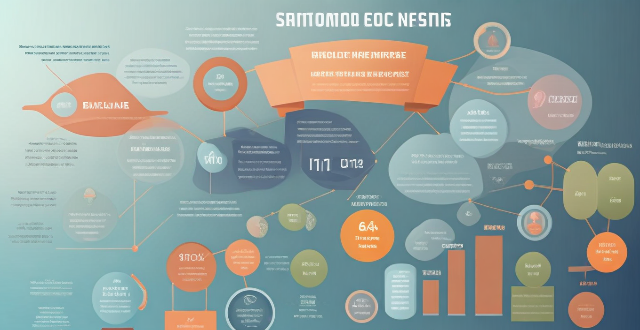
How do economic indicators affect stock market performance ?
Economic indicators significantly impact stock market performance by reflecting the health of an economy. Key indicators include GDP, inflation rate, unemployment rate, interest rates, trade balance, consumer confidence index, and manufacturing index. Each of these measures provides insights into different aspects of economic activity, influencing investor sentiment and decision-making processes. By understanding how these indicators affect the stock market, investors can make informed decisions to maximize returns while minimizing risks.